Next year, installation company Montera Techniek will celebrate its fiftieth anniversary. What began as 'a small team' has grown into a company that carries out national and international projects in water, electrical, and climate technology in the past ten years.
Laurens van Es is project and business unit manager at the company from Pijnacker and has experienced it all at close quarters over the past twenty years. He grew up in a greenhouse and from school, he quickly entered installation technology.
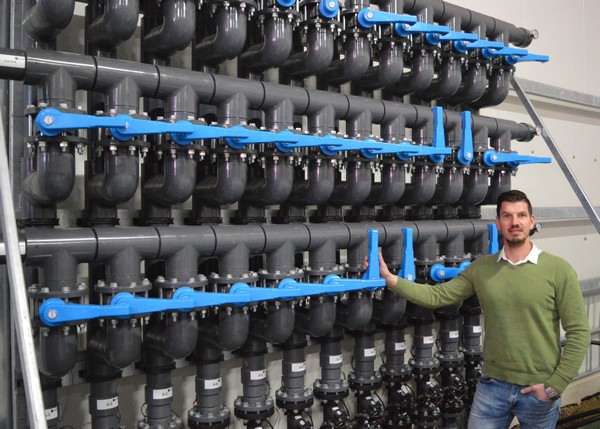 Laurens van Es at a striking piece of technology in the water technology room at Duijvestijn Tomatoes: a crane matrix with 3 rows of cranes that allow each unit to be linked separately to each crane compartment.
Laurens van Es at a striking piece of technology in the water technology room at Duijvestijn Tomatoes: a crane matrix with 3 rows of cranes that allow each unit to be linked separately to each crane compartment.
Experience work
One of his first major projects was the new building for Duijvestijn Tomatoes in Pijnacker, The Netherlands. "I walked in the mud for the first new building for the growers there," he points out when we visited the new building on the other side of Komkommerweg in Pijnacker one afternoon in February. With a view of the new installations and the crops in the greenhouse from behind glass, the project manager explains what makes this particular project and his work in general special.
"Modifying a 25-year-old installation is not something you do just like that. It is experience work. You don't just find people who are good at it. Fortunately, we have such knowledge and experience in-house and still manage to find new technical talent. As you see everywhere in the sector, that is not easy. But the fact that our office is close to TU Delft does help sometimes." Especially after Montera Techniek joined the group led by Bosman Van Zaal in 2014, the company grew significantly. "Without losing our own identity, with Dutch shareholders in the group," Laurens points out. "I think that's important! It gives peace and stability."
Meanwhile, the team has about 25 employees for both inside and outside sales, sales and service. "With them, we work out entire projects, from drawing to installation. On our revamped website we show that as well."
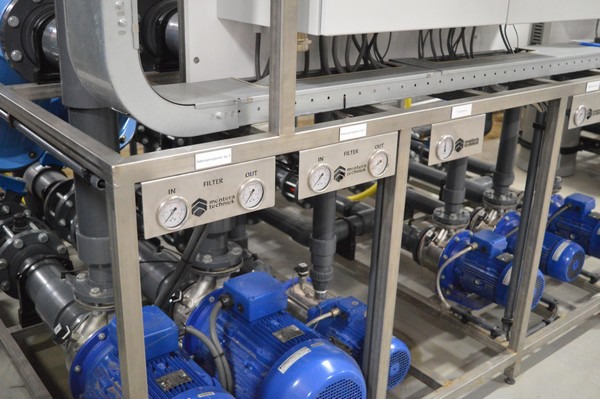
Montera Techniek puts its stamp on the installation work, not on individual installations. These are purchased on the basis of the client's wishes.
Following the client
Traditionally, Montera Techniek has had a strong regional orientation, and that is still the case, although nowadays they also take part in international turnkey projects of Bosman Van Zaal. "In terms of water and electrical engineering, we then pick up our share. We travel after our customers, you could say. I myself hope to go to Chile again in June, for example, for a Bosman Van Zaal project." Closer to home, and literally around the corner for Laurens, who lives in Delfgauw, the new construction of Duijvestijn Tomatoes is "a real 100% Montera Techniek project" in terms of water and electrical engineering. "After the growers moved here from the Westland, we were involved in all the (new) construction projects."
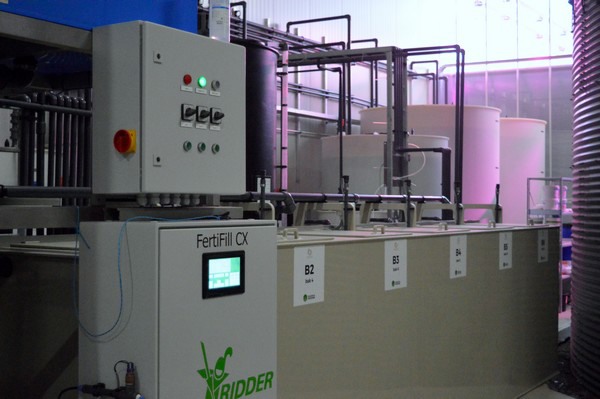
Duijvestijn Tomatoes opted for automatic bin filling.
"He really engineers along"
The installation company, VCA-certified since 2021, specializes in the design and drawing of both water and electrical installations. The company does not have its own R&D, but that does not mean that no developments take place. "It is often the case that we think along with the supplier or with the grower on technical innovations. In this project with Ad van Adrichem, one of the directors at Duijvestijn Tomatoes. He really engineers with us and knows very well what he wants and doesn't want. You take that into account."
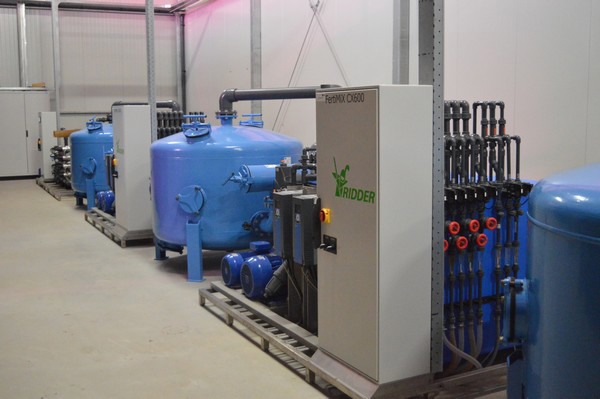
3 irrigation units, 1 for one block of 5 hectares of the greenhouse, 1 for the other 5 hectares, and 1 combination between both greenhouses to have enough capacity at peak demand in the greenhouses with 6 crane compartments each.
On the back of a cigar box
In the field of drawing, a "considerable professionalization" took place in recent years, Laurens explains. "We work out entire projects in 3D and also substantiate everything we do. This also involves much more documentation than before. In the past, projects were drawn as if they were on the back of an old cigar box. But now you see that with new projects everything is properly recorded. With modern technology, this is oftentimes the case. That helps for now and for later. Now that deadlines are becoming ever tighter, we can prevent bottlenecks 'in the field' in advance, in this way. We already prepare everything so well in the office that we can work quickly and well on location." That documenting is not yet possible everywhere. "Where it once started on a cigar box, you don't suddenly start digitizing everything halfway through. But where it can be done, you take steps with the grower."
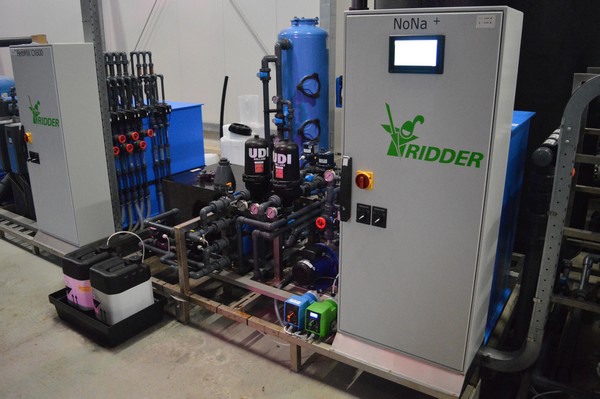 When recycling water, sodium is removed from the drain water; while other fertilizers remain reusable.
When recycling water, sodium is removed from the drain water; while other fertilizers remain reusable.
Flexibility
Once we are in the water technology room at Duijvestijn Tomatoes, Laurens points out an example of such a development, prepared in advance and devised in consultation with the grower: a tap matrix with 3 rows of taps for each irrigation unit 1. "In this way, each unit can be linked to each individual tap compartment." Within five minutes, the grower can switch in case of an emergency. But apart from that, it gives a lot of flexibility. "It takes a bit more pipework, but we see that this is increasingly being chosen, especially for growers with many different varieties and growth stages."
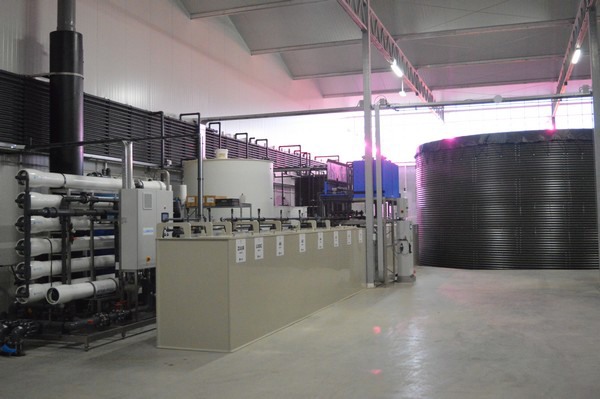 In the water technology room at Duijvestijn Tomatoes. 'One of the most beautiful' Montera Techniek ever installed.
In the water technology room at Duijvestijn Tomatoes. 'One of the most beautiful' Montera Techniek ever installed.
Automation
Laurens calls the water technology room at the tomato grower "1 of the most beautiful water technology rooms we have built. Even now that the project has been up and running for over a year, it is not yet 'finished'. "With this kind of project you are never 'finished'. There are constantly new innovations. These kinds of innovative growers don't stand still." For in the future, the project manager for this type of technical area sees opportunities for more automation, for example. "Already you see this reflected, for example in an automatic bin filler that makes the recipes for the A-B bins." In principle, it saves the grower a trip to this area on the weekend and therefore labor. And that's scarce, as well as among growers.
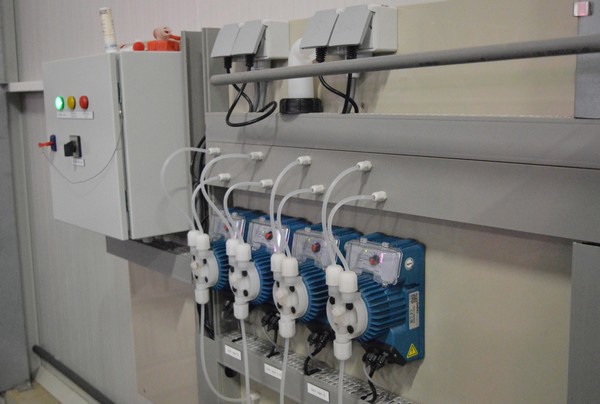
Hydrogen peroxide is dosed and replenished at one central point, so not separately at each irrigation unit. This requires a bit more piping but saves trips with the pallet truck to each individual unit.
Computer game
We were already briefly discussing 3D drawing. Anyone walking through the water technology room at Duijvestijn Tomatoes will understand why that is necessary. "You don't just draw rooms like this freehand," laughs Laurens. "Our drawing package, Revit, sometimes looks a bit like a computer game. You can walk through it with a puppet and in this way you have a good overview, also of what the piping looks like underground, for example." Laurens sees that horticulture is currently at a turning point. "I think that we are gradually working more and more with 3D. Internationally, you already see it a lot in turnkey projects. Nationally, it is still rare, precisely because so little is done on a turnkey basis here. But here too, it will eventually move in that direction."
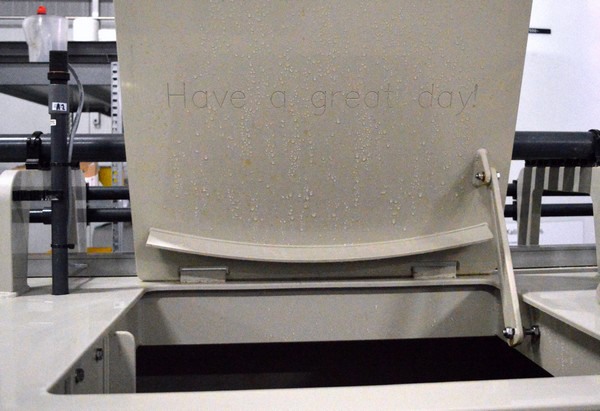
A personal message on the inside of each A-B tray at Duijvestijn Tomatoes.
For more information:
Laurens van Es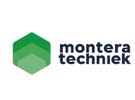
Montera Techniek
015-3696042
l.vanes@montera.nl
info@montera.nl
www.montera.nl
